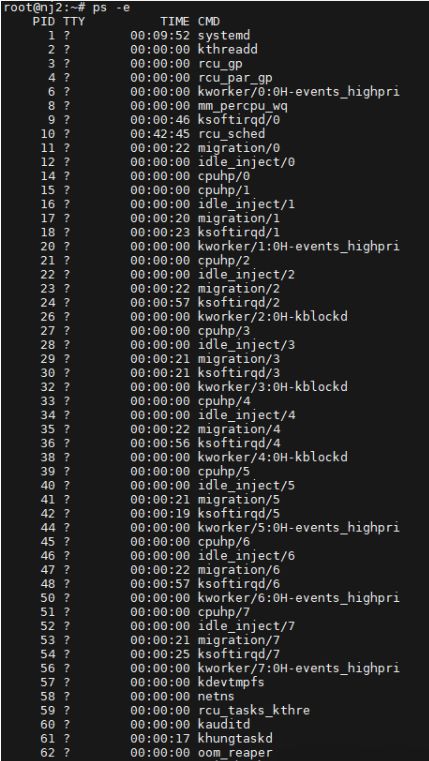 Web Front-end
Web Front-end HTML Tutorial
HTML Tutorial Example introduction to the difference between id and name attributes in input_HTML/Xhtml_Web page production
Example introduction to the difference between id and name attributes in input_HTML/Xhtml_Web page productionI have been building a website for a long time, but I still haven’t figured out the difference between name and id in input. I recently learned jquery and encountered this problem again, so I collected information online. After seeing this article, I sorted it out for later use.
It can be said that almost everyone who has done web development has asked, what is the difference between the ID and Name of an element? Why do we need Name when we have ID?! And we can also get the most classical answer: ID is like a person's ID number, and Name is like his name. ID is obviously unique, and Name is repeatable.
Last week I also encountered the problem of ID and Name. I entered an input type="hidden" on the page and only wrote an ID='SliceInfo'. After assigning the value, submit and use Request in the background. Params["SliceInfo"] cannot get the value. Later, I suddenly realized that it should be marked with Name, so I added Name='SliceInfo' to the input, and everything was ok.
The answer to ID and Name in the first paragraph is too general. Of course, that explanation is completely correct for ID, which is the Identity of the HTML element on the client side. Name is actually much more complicated, because Name has many uses, so it cannot be completely replaced by ID, thus canceling it. Specific uses are:
Use 1: As a server-side indicator of HTML elements that can interact with the server, such as input, select, textarea, and button. We can get the value submitted by the element through Request.Params based on its Name on the server side.
Use 2: HTML element Input type='radio' grouping, we know that the radio button control is in the same grouping class, the check operation is mutex, only one radio can be selected at the same time, this grouping is based on the same Name attribute realized.
Use 3: Establish an anchor point in the page. We know that link is to obtain a page hyperlink. If you do not use the href attribute, use Name instead, such as: < ;a name="PageBottom">, we get a page anchor.
Use 4: Identity as an object, such as Applet, Object, Embed and other elements. For example, in an Applet object instance, we will use its Name to refer to the object.
Purpose 5: When associating between IMG elements and MAP elements, if you want to define the hotspot area of IMG, you need to use its attribute usemap, so usemap="#name" (Name of the associated MAP element).
Use 6: Attributes of certain specific elements, such as attribute, meta and param. For example, define parameters for Object or in Meta.
Obviously these uses cannot be simply replaced by ID, so the difference between ID and Name of HTML elements is not the difference between ID number and name. They have different functions. .
Of course, the Name attribute of the HTML element can also play a role as an ID in the page, because in the DHTML object tree, we can use document.getElementsByName to obtain an object array containing all specified Name elements in the page. . There is another problem with the Name attribute. When we dynamically create an element that can contain the Name attribute, we cannot simply use the assignment element.name = "..." to add its Name. We must use document.createElement( when creating the Element. '
var input = document.createElement('INPUT');
input.id = 'myId';
input.name = 'myName';
alert(input.outerHTML);
The result displayed in the message box is: .
var input = document.createElement('');
input.id = 'myId';
alert(input.outerHTML);
< ; /script>
The result displayed in the message box is: .
The design of initializing the Name attribute is not a defect of IE, because MSDN says it should be done this way, but what is the principle of this design? I haven't thought too clearly yet.
By the way, what if there are n (n>1) HTML elements in the page with the same ID? How to reference them in DHTML objects? If we use ASPX pages, such a situation is not easy to happen, because the aspnet process does not allow non-unique IDs when processing aspx pages. This means that the page will throw an exception and cannot be rendered normally. If it is not a dynamic page and we insist on repeating the ID, what should we do with IE? At this time, we can still use document.getElementById to obtain objects, but we can only obtain the first object that appears during HTML Render among those objects with duplicate IDs. At this time, the repeated ID will automatically become an array when referenced, and the elements with repeated IDs will exist in the array in order of Render.
Form elements (form input textarea select) and frame elements (iframe frame) are named
These elements are related to form submission (frame elements act on the target of the form). On the receiving page of the form, only
Receive elements with name. Elements assigned ID cannot receive values through the form. You can verify it yourself.
There is an exception: A can be assigned name as an anchor or ID
Of course, the above elements can also be assigned ID values. When assigning ID values, the method of referencing these elements will change.
Assign name: document.formName.inputName document.frames("frameName")
Assign ID: document.getElementById("inputID") document.all.frameID
Only IDs can be assigned but not names: (except for elements related to the form, only IDs can be assigned)
body li table tr td th p div span pre dl dt dd font b etc.
 此 Apple ID 尚未在 iTunes Store 中使用:修复Jun 10, 2024 pm 05:42 PM
此 Apple ID 尚未在 iTunes Store 中使用:修复Jun 10, 2024 pm 05:42 PM使用AppleID登录iTunesStore时,可能会在屏幕上抛出此错误提示“此AppleID尚未在iTunesStore中使用”。没有什么可担心的错误提示,您可以按照这些解决方案集进行修复。修复1–更改送货地址此提示出现在iTunesStore中的主要原因是您的AppleID个人资料中没有正确的地址。步骤1–首先,打开iPhone上的iPhone设置。步骤2–AppleID应位于所有其他设置的顶部。所以,打开它。步骤3–在那里,打开“付款和运输”选项。步骤4–使用面容ID验证您的访问权限。步骤
 修复事件ID 55,50,98,140磁盘错误在事件查看器Mar 19, 2024 am 09:43 AM
修复事件ID 55,50,98,140磁盘错误在事件查看器Mar 19, 2024 am 09:43 AM若您在Windows11/10的事件查看器中发现事件ID55、50、140或98,或遇到磁盘文件系统结构损坏且无法使用的错误,请按照以下指南解决此问题。什么是事件55,磁盘上的文件系统结构损坏和不可用的意思?第55届会议,Ntfs磁盘上的文件系统结构损坏且无法使用。请在卷上运行chkMSK实用程序当NTFS无法将数据写入事务日志时,会触发事件ID55的错误,这将导致NTFS无法完成无法写入事务数据的操作。这种错误通常发生在文件系统损坏的情况下,可能是由于磁盘上存在坏扇区或文件系统对磁盘子系统的不
 阿里巴巴id在哪里看Mar 08, 2024 pm 09:49 PM
阿里巴巴id在哪里看Mar 08, 2024 pm 09:49 PM在阿里巴巴软件中,一旦您成功注册一个账号,系统就会为您分配一个独特的ID,这个ID将作为您在平台上的身份标识。但是对于许多用户来说,他们会想要查询自己的ID,但是却不知道该如何操作。那么本站小编带来下文中,就将为大家带来详细的攻略步骤介绍,希望能帮助到大家!阿里巴巴id在哪里看答案:【阿里巴巴】-【我的】。1、首先打开阿里巴巴软件,进入到首页中后我们需要点击右下角的【我的】;2、然后来到我的页面中后我们在页面的上方就可以看到【id】了;阿里巴巴id和淘宝一样吗阿里巴巴id和淘宝id不一样,但是二
![事件 ID 4660:已删除对象 [修复]](https://img.php.cn/upload/article/000/887/227/168834320512143.png) 事件 ID 4660:已删除对象 [修复]Jul 03, 2023 am 08:13 AM
事件 ID 4660:已删除对象 [修复]Jul 03, 2023 am 08:13 AM我们的一些读者遇到了事件ID4660。他们通常不确定该怎么做,所以我们在本指南中解释。删除对象时通常会记录事件ID4660,因此我们还将探索一些实用的方法在您的计算机上修复它。什么是事件ID4660?事件ID4660与活动目录中的对象相关,将由以下任一因素触发:对象删除–每当从ActiveDirectory中删除对象时,都会记录事件ID为4660的安全事件。手动更改–当用户或管理员手动更改对象的权限时,可能会生成事件ID4660。更改权限设置、修改访问级别或添加或删除人员或组时,可能会发生这种情
 腾讯视频id在哪里查看Feb 24, 2024 pm 06:25 PM
腾讯视频id在哪里查看Feb 24, 2024 pm 06:25 PM腾讯视频id在哪里查看?腾讯视频APP中是有专属的id,但是多数的用户不知道如何查看腾讯视频id,接下来就是小编为用户带来的腾讯视频id查看方法图文教程,感兴趣的用户快来一起看看吧!腾讯视频使用教程腾讯视频id在哪里查看1、首先打开腾讯视频APP,主页面右下角【个人中心】进入到专区;2、之后进入到个人中心页面,选择【设置】功能;3、然后在设置页面,点击最下方【退出账号】;4、最后在下图所示的页面即可查看到专属的id号。
 vue3怎么封装input组件和统一表单数据May 12, 2023 pm 03:58 PM
vue3怎么封装input组件和统一表单数据May 12, 2023 pm 03:58 PM准备工作用vuecreateexample创建项目,参数大概如下:用原生input原生的input,主要是value和change,数据在change的时候需要同步。App.tsx如下:import{ref}from'vue';exportdefault{setup(){//username就是数据constusername=ref('张三');//输入框变化的时候,同步数据constonInput=;return()=>({
 laravel input隐藏域怎么实现Dec 12, 2022 am 10:07 AM
laravel input隐藏域怎么实现Dec 12, 2022 am 10:07 AMlaravel input隐藏域的实现方法:1、找到并打开Blade模板文件;2、在Blade模板中使用method_field方法来创建隐藏域,其创建语法是“{{ method_field('DELETE') }}”。
 如何在Linux中查找父进程ID (PPID)Mar 09, 2024 am 08:01 AM
如何在Linux中查找父进程ID (PPID)Mar 09, 2024 am 08:01 AM在Linux操作系统中,每个运行的程序都是一个进程,每个进程都有一个唯一的进程标识符(PID)。同样的,每个进程都会有一个父进程,也就是创建它的进程,父进程的标识符被称为父进程ID(PPID)。在这篇文章中,我们将探讨如何在Linux系统中查找父进程的ID,并介绍一些有效的命令和工具,以帮助您获取有关进程之间关系的详细信息。查找父进程ID的基本命令首先,我将向大家简要介绍几个基本命令,这些命令可用于查看系统中运行的所有进程及其父进程ID。使用ps命令查看进程信息ps命令是一个强大的工具,它用于报


Hot AI Tools

Undresser.AI Undress
AI-powered app for creating realistic nude photos

AI Clothes Remover
Online AI tool for removing clothes from photos.

Undress AI Tool
Undress images for free

Clothoff.io
AI clothes remover

AI Hentai Generator
Generate AI Hentai for free.

Hot Article

Hot Tools

EditPlus Chinese cracked version
Small size, syntax highlighting, does not support code prompt function

VSCode Windows 64-bit Download
A free and powerful IDE editor launched by Microsoft

Dreamweaver Mac version
Visual web development tools

MinGW - Minimalist GNU for Windows
This project is in the process of being migrated to osdn.net/projects/mingw, you can continue to follow us there. MinGW: A native Windows port of the GNU Compiler Collection (GCC), freely distributable import libraries and header files for building native Windows applications; includes extensions to the MSVC runtime to support C99 functionality. All MinGW software can run on 64-bit Windows platforms.

PhpStorm Mac version
The latest (2018.2.1) professional PHP integrated development tool




